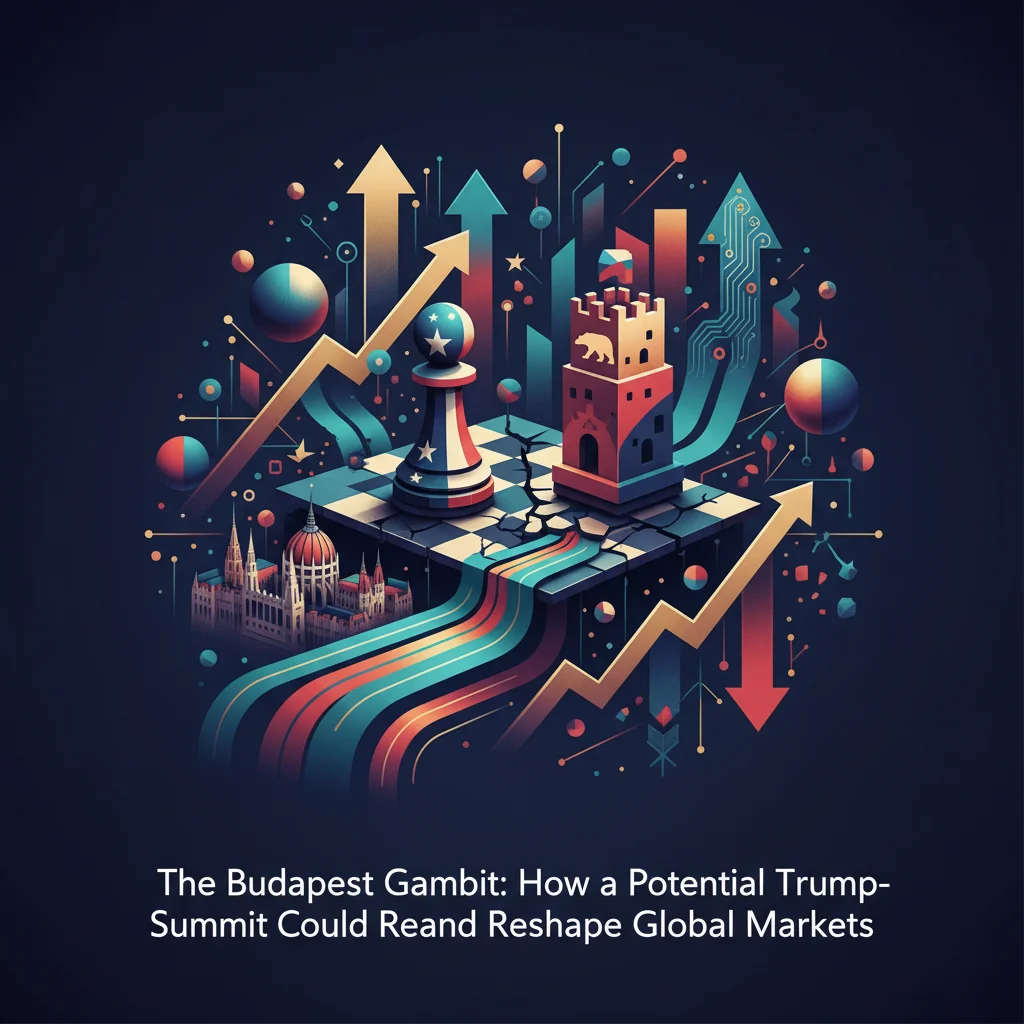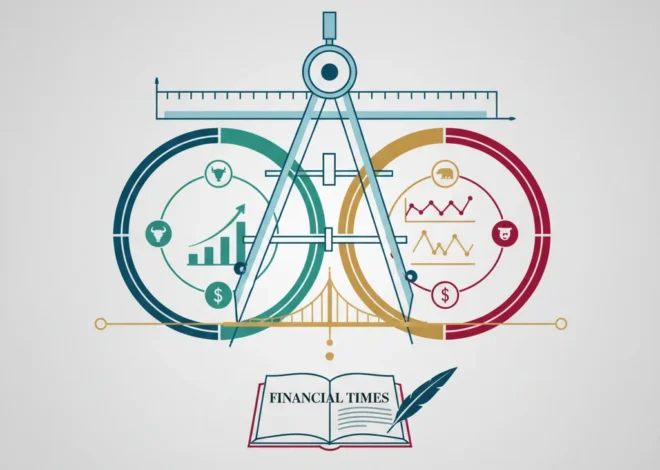
The Budapest Gambit: How a Potential Trump-Putin Summit Could Reshape Global Markets
A High-Stakes Meeting on the Danube
In the world of global finance and investing, stability is currency. Investors and business leaders build strategies on predictable frameworks, established alliances, and the steady hand of international law. But what happens when the very foundations of that order are shaken? A seismic tremor is emanating from Central Europe, where a potential summit between Donald Trump and Vladimir Putin, hosted in Budapest by Hungary’s Viktor Orbán, threatens to upend the geopolitical landscape and send shockwaves through the global economy.
The proposal, actively promoted by Orbán, is not merely a diplomatic footnote; it’s a bold gambit that has already drawn sharp condemnation from Ukrainian President Volodymyr Zelenskyy and raised alarms in capitals from Washington to Brussels. According to reports, Orbán has positioned himself as a potential mediator, leveraging his unique relationships with both the former U.S. President and the Russian leader to broker a meeting aimed at ending the war in Ukraine. As one senior Hungarian official stated, the primary obstacle is that the current U.S. administration “would not be a party to it” (source). This sets the stage for a potential diplomatic showdown contingent on the results of the upcoming U.S. election, with profound implications for everything from energy trading to the stability of the international banking system.
Why Budapest? Orbán’s Strategic Position
To understand the significance of this potential summit, one must first understand the host. Viktor Orbán has cultivated a reputation as a maverick within the European Union and NATO. While a member of both alliances, he has consistently maintained close ties with Moscow, opposing sanctions, blocking aid to Ukraine, and echoing Kremlin talking points. This has made Hungary a diplomatic outlier, but also a unique bridge between East and West.
For Orbán, hosting such a summit would be a monumental political victory. It would:
- Elevate Hungary’s Stature: Placing Budapest at the center of global diplomacy would grant Orbán immense prestige and influence, far outweighing the country’s economic or military size.
- Validate His Political Stance: Successfully brokering a peace deal, however controversial, would be presented as a vindication of his long-held strategy of engaging with, rather than isolating, Russia.
- Strengthen Ideological Alliances: The meeting would solidify a triumvirate of leaders who share a skepticism of liberal internationalism, global institutions, and mainstream Western foreign policy. This ideological alignment has been growing, with Trump recently praising Orbán as a “fantastic leader” during a visit to Mar-a-Lago.
This move, however, is fraught with peril. It directly challenges the unified Western stance that there can be no negotiations about Ukraine without Ukraine’s participation. For investors, this signals a potential fragmentation of the West’s most powerful military and economic bloc, a cornerstone of global stability for over 70 years. The very prospect introduces a new layer of risk that must be priced into the stock market.
Beyond the Punchline: What Tim Robinson's 'The Chair Company' Teaches the World of Finance
Market Volatility on the Horizon: An Investor’s Guide to the Fallout
Geopolitical shocks are a primary driver of market volatility. A Trump-Putin summit in Budapest would not be a minor event; it would represent a potential paradigm shift. Financial professionals and investors must begin to model the potential outcomes and their impact on various asset classes. The core of the issue is a move from a predictable, rules-based system to a transactional, personality-driven one. This uncertainty is poison to long-term investing strategies.
Below is a comparative analysis of potential market impacts stemming from such a summit versus the current geopolitical status quo.
| Asset Class / Sector | Potential Impact of a “Budapest Accord” | Impact Under Current Trajectory (Status Quo) |
|---|---|---|
| Energy Markets (Oil & Gas) | High volatility. A sudden peace deal could lead to a short-term price crash as risk premiums evaporate, followed by uncertainty over Russia’s return to markets. | Prices remain elevated and sensitive to supply disruptions and sanctions policy. Relative stability within a high-price band. |
| Defense Stocks | Potential sharp downturn. A perceived end to the conflict and a US pivot away from European security could slash future defense budgets and contract pipelines. | Sustained growth as NATO countries increase spending to meet 2% GDP targets and backfill aid to Ukraine. |
| European Equities & Euro (€) | Negative. A fractured NATO and a US-Russia deal bypassing the EU would severely undermine confidence in European security and economic unity, likely weakening the Euro. | Stable to moderate growth, but weighed down by ongoing energy costs and regional security concerns. |
| US Dollar ($) | Uncertain. Could strengthen as a safe-haven asset amid European instability, or weaken long-term if US reliability as an ally is questioned globally. | Remains the dominant global reserve currency, benefiting from its safe-haven status during regional conflicts. |
The Diplomatic Domino Effect: Fracturing Alliances
The strategic implications of a Budapest summit extend far beyond the immediate battlefield in Ukraine. For decades, the transatlantic alliance between North America and Europe has been the bedrock of global security. This meeting, orchestrated by a NATO member and a potential U.S. President, with a leader who has been globally isolated, threatens to shatter that unity.
Western leaders have largely shunned Putin since the full-scale invasion of Ukraine in 2022, a strategy designed to isolate him on the world stage (source). A high-profile summit hosted by a supposed ally would completely undermine this effort. European leaders would be faced with an impossible choice: condemn the actions of a potential U.S. President and risk further alienating their most powerful security partner, or tacitly accept a deal that sells out Ukrainian sovereignty and emboldens Russia. This would create deep, perhaps irreparable, fissures within NATO and the EU, forcing a costly and destabilizing realignment of European defense and foreign policy.
The principles of international law and national sovereignty are also at stake. A peace deal brokered over the heads of the Ukrainian government would set a dangerous precedent, suggesting that powerful nations can invade smaller neighbors and then negotiate a settlement that legitimizes their aggression. This fundamentally alters the risk calculus for nations globally and could fuel instability in other geopolitical hotspots. From an economics perspective, this heightened risk environment would translate into higher insurance premiums, disrupted supply chains, and a general reluctance for cross-border capital investment, acting as a drag on global growth.
Conclusion: Pricing in a New Era of Geopolitical Risk
The prospect of a Trump-Putin summit in Budapest is more than a political headline; it is a critical variable that every investor, CEO, and financial analyst must now incorporate into their risk models. It represents the convergence of political populism with hard-nosed geopolitical maneuvering, creating an environment of profound uncertainty.
The potential fallout touches every corner of the financial world—from the macro-level stability of the global economy to the micro-level performance of individual stocks in the defense, energy, and financial technology sectors. While the summit remains hypothetical, its very possibility forces a re-evaluation of the stability of Western alliances, the future of the war in Ukraine, and the foundational rules of the international order.
For now, markets will watch and wait. But the tremors from the Danube are a clear warning: the landscape of global politics and finance may be on the verge of a tectonic shift. Prudent investors will be those who prepare for the earthquake before the ground starts to shake.
The Great Squeeze: Why Wall Street's Bears Are Facing a Billion-Dollar Bleed


